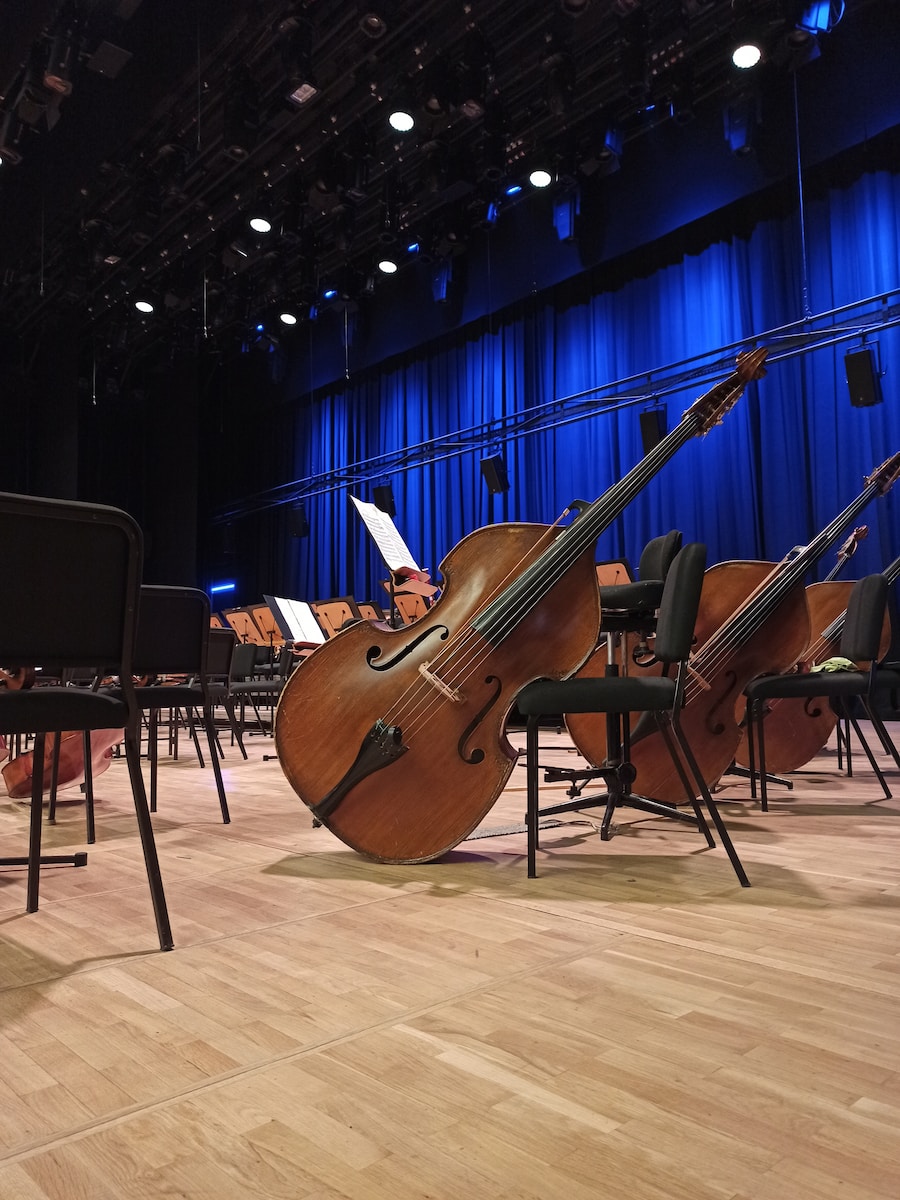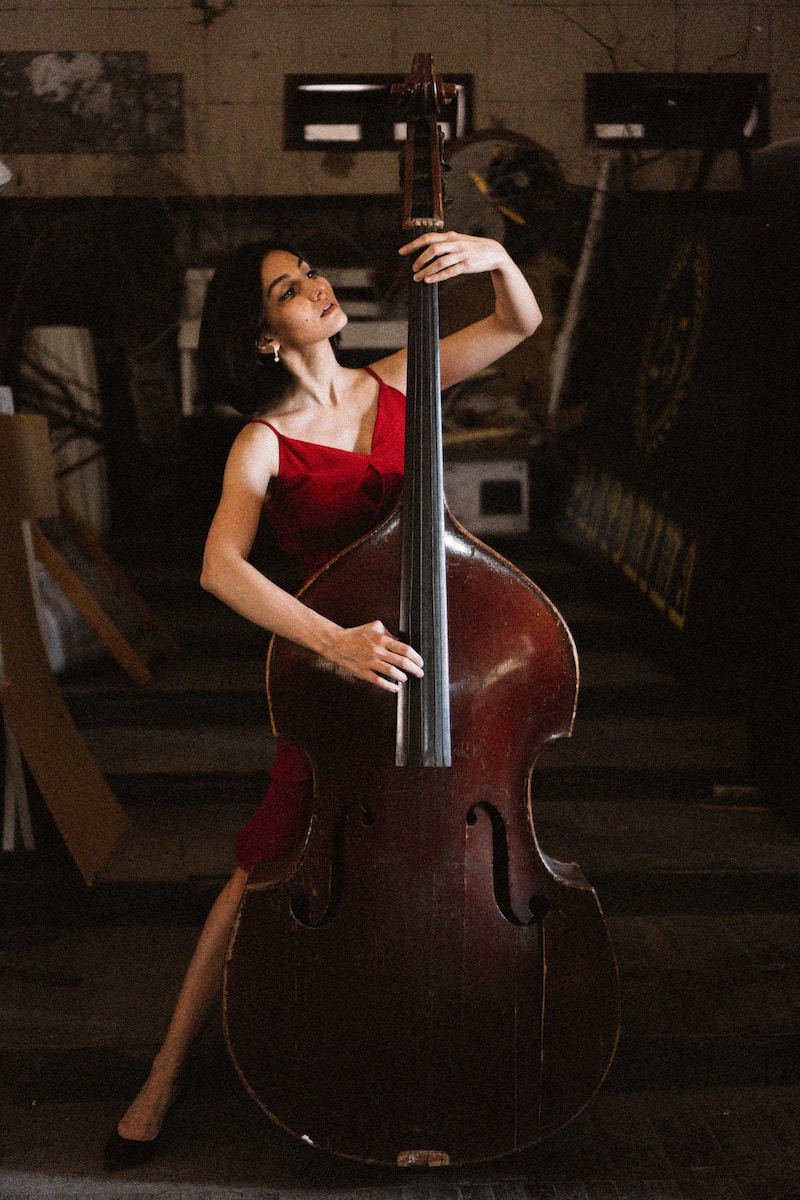The upright bass, also known as the double bass, string bass, or bass violin, is the largest and lowest-pitched instrument in the string family. It is played with a bow or plucked with the fingers, and is commonly used in jazz, blues, country, and classical music.

Here is an overview of the main components of an upright bass:
- Body: The body of the upright bass is made up of two parts, the top (or belly) and the back. The top is usually made of spruce, while the back can be made of maple, mahogany, or other hardwoods. The body is very large, with a long and wide waist, and is shaped like a curved teardrop. The body is hollow to allow the sound to resonate.
- Neck: The neck of the upright bass is attached to the body and extends upwards towards the headstock. It is usually made of maple or other hardwoods and is fitted with a fingerboard made of ebony or other hard woods. The neck holds the strings, and the fingerboard is where the musician places their fingers to change the pitch of the notes.
- Strings: The upright bass has four strings, which are typically tuned to E, A, D, and G. The strings are much thicker than those on the violin, viola, and cello, and are usually made of steel or gut. The strings are stretched over the bridge and are held in place by the tailpiece.
- Bridge: The bridge of the upright bass is similar to the bridges on the other string instruments. It is a thin piece of wood that is placed between the strings and the body of the bass. It is curved to allow the strings to vibrate freely and is held in place by the tension of the strings.
- Soundpost: The soundpost of the upright bass is also similar to the soundposts on the other string instruments. It is a small, cylindrical piece of wood that is placed inside the body of the bass, underneath the treble side of the bridge. It helps to transfer the vibrations from the strings to the body of the bass, which amplifies the sound.
- Tailpiece: The tailpiece of the upright bass is a piece of wood or metal that is attached to the bottom of the body of the bass. The strings are tied to the tailpiece, which holds them in place.
- Tuning pegs: The tuning pegs of the upright bass are located at the top of the neck, near the headstock. They are used to adjust the tension of the strings and tune the bass to the desired pitch.
- Bow: The bow of the upright bass is similar to the bows on the other string instruments. It is a long, slender stick made of wood, carbon fiber, or other materials. It is strung with horsehair and is used to play the strings of the bass. The bow is coated with rosin, a sticky substance that helps the bow grip the strings and produce a sound.
The upright bass produces a very low range of notes, and its large size allows it to produce a deep and resonant tone. It is often used as a bass voice in jazz, blues, and country music, and is also used in classical music, especially in orchestral and chamber music. The upright bass can be played with a bow or plucked with the fingers, giving it a versatile range of sounds and techniques.











































































































